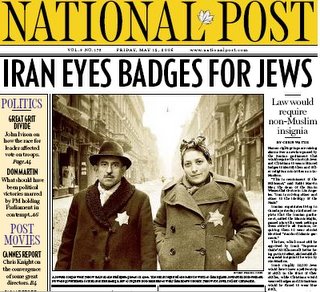Alan Mutter is stirring things up again with a spreadsheet that journalists can use to value their work. His thinking: Stop debasing yourself by working for peanuts. Figure out what your time is worth and charge accordingly.
With his characteristic eye for detail, Mutter figures such factors as the self-employment tax and capital expenses in his calculations. The sample shows a fictional reporter charging about 55 cents a word to cover his/her fully loaded costs figuring an 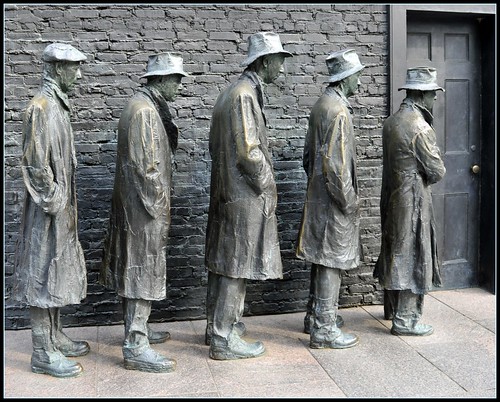 average pay rate of about $30/hour, which is union scale in Pittsburgh. Your mileage may vary, of course.
average pay rate of about $30/hour, which is union scale in Pittsburgh. Your mileage may vary, of course.
If journalists “don’t put a value on what they do, then no one else will, either,” Mutter declares, noting that media organizations are using the explosion of blogs and citizen media operations to “pick off writers, photographers and videographers on the cheap.”
We have enormous respect for Alan Mutter, but we find ourselves in complete disagreement on this one. In our view, journalists who draw lines in the sand and start charging only what they think they’re worth will find themselves practicing a lot less journalism.
Are media organizations taking advantage of plummeting freelance rates? You betcha. Is what they’re doing wrong? We don’t think so. Supply and demand is the underpinning of a capitalist economy, and if the rules have changed in a way that devalues quality journalism, well, those are the cards we’re dealt. It sucks, but it’s how the system works.
Journalists can try to charge what they think they’re worth, but they’ll ultimately live or die by what the market is willing to pay. With the arrival of Web 2.0-style publishing, millions of people have started playing at journalism and it turns out some aren’t half bad at it. The trouble is that many of these casual journalists don’t make a living as reporters. Their journalism is a sidelight to their day jobs. They may be happy to work for a vague reward defined as “exposure” if it pays off in speaking jobs, consulting work or book contracts.
Mutter is outraged that people contact him asking “to commission an article or reprint a post in exchange for the ephemeral compensation known as ‘exposure,’” but the reality of the market is that a lot of people are willing to work for that (full disclosure: we recently approached Mutter about contributing to a for-profit website in exchange for a modest fee; he politely declined). For example, many book authors write extensively about their expertise for free in exchange for exposure in major publications.
We sympathize with journalists who have seen the market value of their work collapse over the last couple of years. We’ve experienced some of that pain personally and we have many friends and colleagues who are suffering because of it. However, the market has spoken, and the solution to collapsing fees isn’t to insist on getting a rate that employers will no longer pay.
Is there a solution? Well, journalists who specialize in everything from geography to gastroenterology can still command higher prices than general assignment reporters. Also, a lot of journalists work for commercial clients on the side so that they can afford to practice their craft. There’s money in speaking, consulting, writing books and corporate ghost-writing. Some of that work may be distasteful, but at least it pays the bills.
That doesn’t solve the problem of who is going to embed in Iraq for six months at 25 cents a word. That’s a much tougher issue and we wish we had better ideas how to solve it. But drawing lines in the sand is career suicide.
 Indianapolis-based freelance journalist Christopher Lloyd sees things our way. He’s passionate about movies and has contributed free movie reviews to some area newspapers since being laid off by the Indianapolis Star. “I knew I wasn’t going to drop my passion for film criticism. If I was going to do it, I might as well have it published,” he writes. Plus, movie studios won’t pay attention to a journalist whose work isn’t being read by anyone. He’s still plugging away and some of his clients are now paying a modest fee. He’s also got a site for film buffs called The Film Yap, where contributors work for, you guessed it…
Indianapolis-based freelance journalist Christopher Lloyd sees things our way. He’s passionate about movies and has contributed free movie reviews to some area newspapers since being laid off by the Indianapolis Star. “I knew I wasn’t going to drop my passion for film criticism. If I was going to do it, I might as well have it published,” he writes. Plus, movie studios won’t pay attention to a journalist whose work isn’t being read by anyone. He’s still plugging away and some of his clients are now paying a modest fee. He’s also got a site for film buffs called The Film Yap, where contributors work for, you guessed it…
Speaking of careers, a university professor has analyzed six months worth of recent job postings and discovered that traditional and non-traditional news outlets differ in their criteria for hiring journalists. Dr. Serena Carpenter, an assistant professor in the Walter Cronkite School of Journalism and Mass Communication at Arizona State University, looked at 664 online media job postings and concluded that established media organizations such as newspapers tended to favor candidates with solid writing and reporting skills while new media operations looked favorably on what she calls “adaptive expertise.” That includes broad-based experience and creative thinking.
 Seth Lewis, a former Miami Herald editor and Ph.D student at the University of Texas, has joined the Nieman Journalism Lab as a contributor (paid?) specializing in journalism education and he’d like to know your ideas for what J-schools should teach. Perhaps stealing a line from the research noted above, Lewis is inclined to recommend a focus on adaptability. He defines that as the skills “to work in unpredictable settings, to generate their own funding as needed, and otherwise learn as they go.” In the process of interviewing for a faculty position at various academic institutions, Lewis says he was often asked what journalism schools should teach, which indicates that the profs at those schools are perplexed as well. Maybe you can provide him with some guidance.
Seth Lewis, a former Miami Herald editor and Ph.D student at the University of Texas, has joined the Nieman Journalism Lab as a contributor (paid?) specializing in journalism education and he’d like to know your ideas for what J-schools should teach. Perhaps stealing a line from the research noted above, Lewis is inclined to recommend a focus on adaptability. He defines that as the skills “to work in unpredictable settings, to generate their own funding as needed, and otherwise learn as they go.” In the process of interviewing for a faculty position at various academic institutions, Lewis says he was often asked what journalism schools should teach, which indicates that the profs at those schools are perplexed as well. Maybe you can provide him with some guidance.
Miscellany
Opponents of government subsidies for media organizations overlook an important detail: US media has been subsidized for 200 years, reports The New York Times. Citing a report released last week by the Annenberg School at the University of Southern California, the Times notes that government support of newspapers has actually been declining in recent years as mailing discounts have diminished laws requiring businesses to buy newspaper ads for certain kinds of legal notices have been dropped. In fact, the study’s authors estimate that annual government support has declined from more than $4 billion in 1970 to less than $2 billion today.
 News organizations are starting to figure out how to monetize social networks. The Austin American-Statesman is charging for tweets and actually booking revenue. Local businesses can buy two tweets per day of up to 124 characters (to allow for retweets). The messages are labeled as ads and must prompt the reader to take action. Huffington Post is experimenting with the same idea. The New York Times is also selling packages of ads against visitors to its Facebook site. Nobody’s making much money at this yet, though.
News organizations are starting to figure out how to monetize social networks. The Austin American-Statesman is charging for tweets and actually booking revenue. Local businesses can buy two tweets per day of up to 124 characters (to allow for retweets). The messages are labeled as ads and must prompt the reader to take action. Huffington Post is experimenting with the same idea. The New York Times is also selling packages of ads against visitors to its Facebook site. Nobody’s making much money at this yet, though.
Gannett executives demonstrated a rarely-seen attitude during this week’s earnings call: Optimism. “”We are very excited by what we are seeing,” said CEO Craig Dubow. Circulation is beginning to recover and profitability is returning to the income statement, enabling Gannett to pay down some of its debt. Profitability was still driven more by cost-cutting than by revenue growth, however. Classified revenues were down nearly 22% in the quarter and digital revenues fell 7.2% due largely to the dismal picture state of employment advertising. More coverage.
Newspaper readership continues at record levels when you factor in online traffic, according to the latest results from Nielsen Online and the Newspaper Association of America (NAA). More than 72 million people — about one quarter of all Internet users, according to the NAA — visited a newspaper site in the fourth quarter, racking up 3.2 billion monthly page views. The NAA declined to provide year-to-year comparisons, citing a change in Nielsen’s measurement technique.

 With the media world buzzing about the fake news engine that is Cambridge Analytica, news about a new Google initiative to support quality journalism might easily be overlooked. The multi-faceted investment covers everything from website analytics tuned to the needs of publishers to machine learning tools that identify potential subscribers.
With the media world buzzing about the fake news engine that is Cambridge Analytica, news about a new Google initiative to support quality journalism might easily be overlooked. The multi-faceted investment covers everything from website analytics tuned to the needs of publishers to machine learning tools that identify potential subscribers. Their oped raises an important point about the influence of traffic on journalistic quality and the declining value of circulation. As we noted last September, circulation at some of the country’s largest magazines
Their oped raises an important point about the influence of traffic on journalistic quality and the declining value of circulation. As we noted last September, circulation at some of the country’s largest magazines 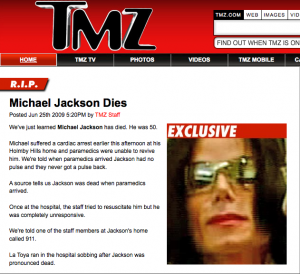








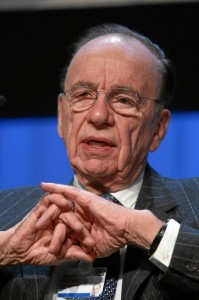
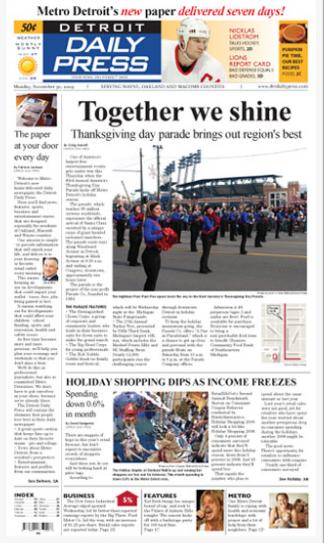 After nearly losing its two daily newspapers a year ago,
After nearly losing its two daily newspapers a year ago,  Go to the basic
Go to the basic 

